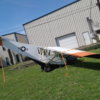But low numbers, so the chances of them being skewed are higher. I've looked extensively at the 750 and the super-stol as build projects and I know of no reason they should have a higher accident rate, other than the fact that they are "entry level" builds. I have heard of one guy who built a 750 in 3 months, from beginning to taxi. Because it uses all blind rivets, the assembly phase is very fast.
The 750 can certainly be built very fast – if you’re willing to slap it together. Frankly, this is exactly what quite a few Zeniths look like
If you want to build a nice 750, it will realistically take at least as long as building a Kitfox or a RANS S-20/21. Zenith also leaves many details up to the builder, whereas the Kitfox and RANS kits are much more refined, what is overall a huge time saver, if the goal is to end up with a nice plane.
Unless we are occupied with other stuff, my wife and I are working on it every evening and weekend. Still, we are already two years into the build, I think it will take us at least another year to get it done.
We also know several other 750 builders: Looking at their progress as well as ours, I would think that one needs to plan at a minimum to spend between 1,500 and 2,000 hours to build a flying Zenith 750. We’ll probably end up closer to 2,500 – 3,000 hours, but this includes paint. The 500 hours they mention on their website might be true for the basic airframe, without engine, paint, avionics, only minimal deburring and if the builder doesn’t care too much about holes that don’t line up correctly and simply runs a drill through them.
To avoid disappointment, my recommendation is therefore to plan with around 2,500 hours and to take it as a pleasant surprise if the plane is finished earlier.
Quite a few builders are tracking their hours on Kitlog Pro, this gives a good idea of how much time they are actually putting into their build:
http://www.mykitlog.com/search.php?...0&city=&state=&country=&sortby=hours&offset=0


